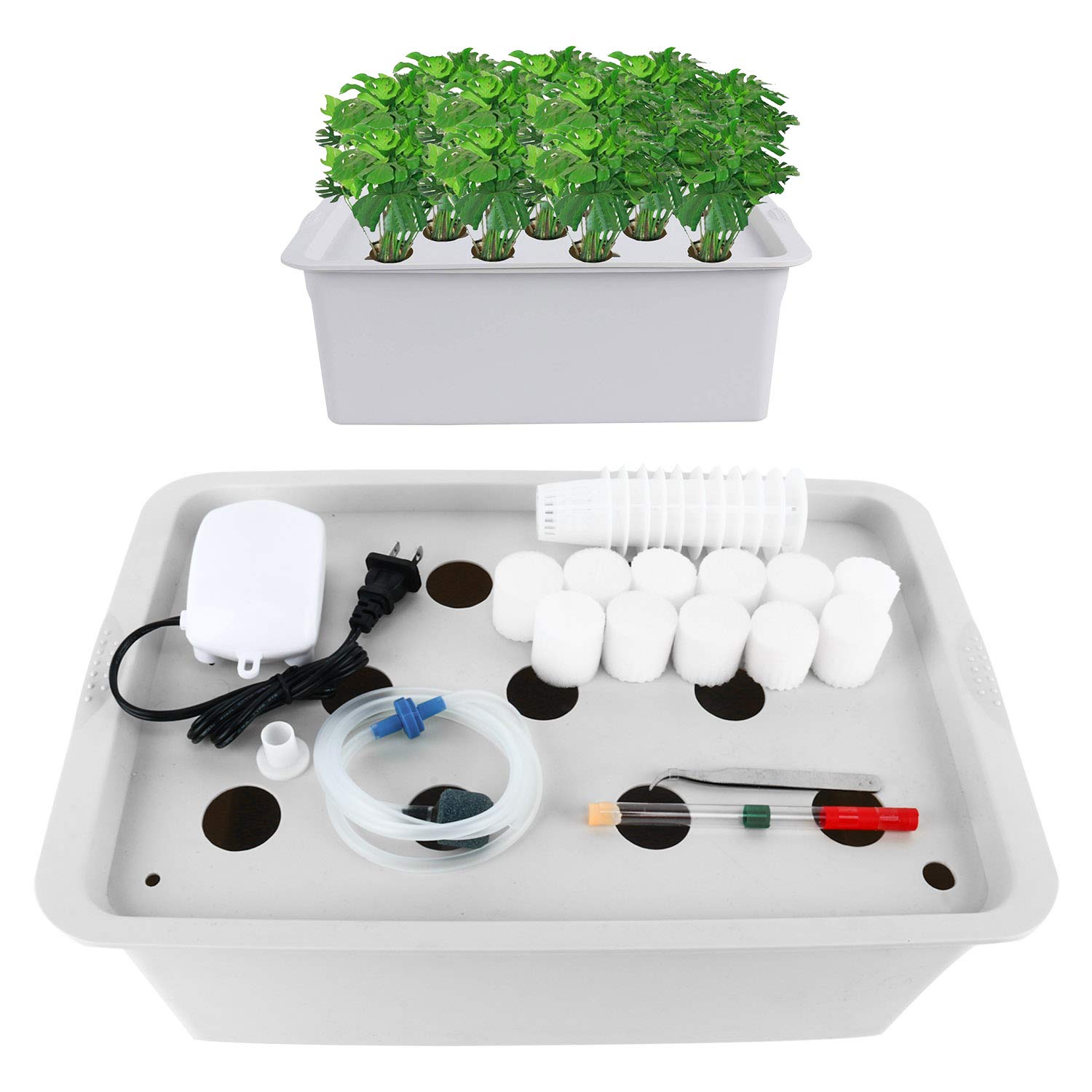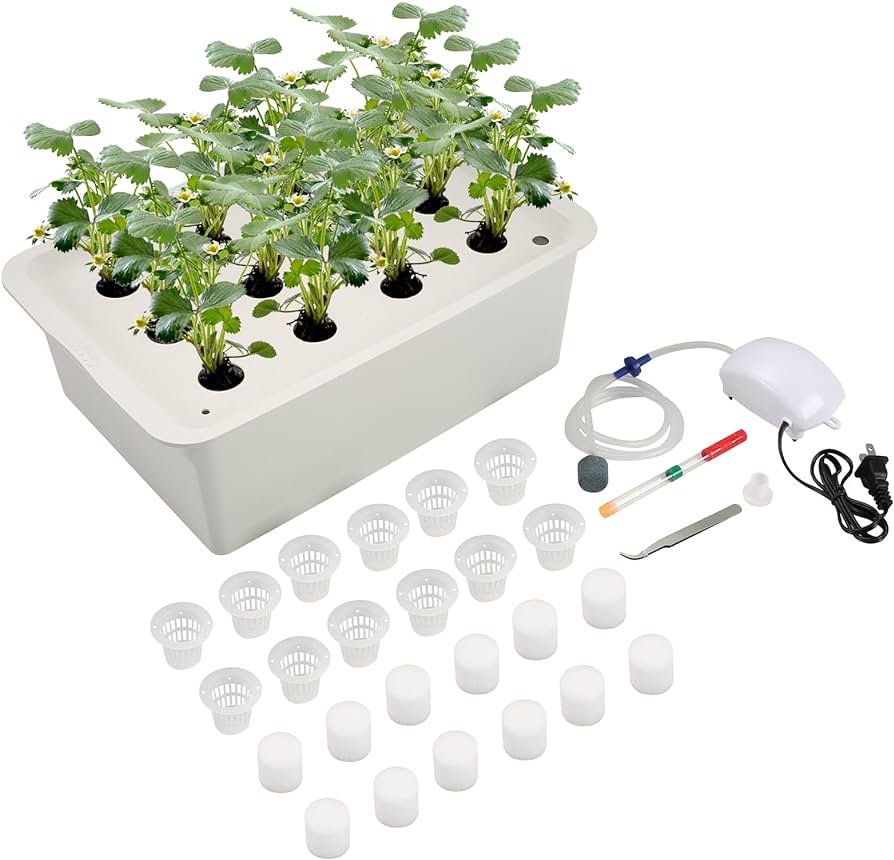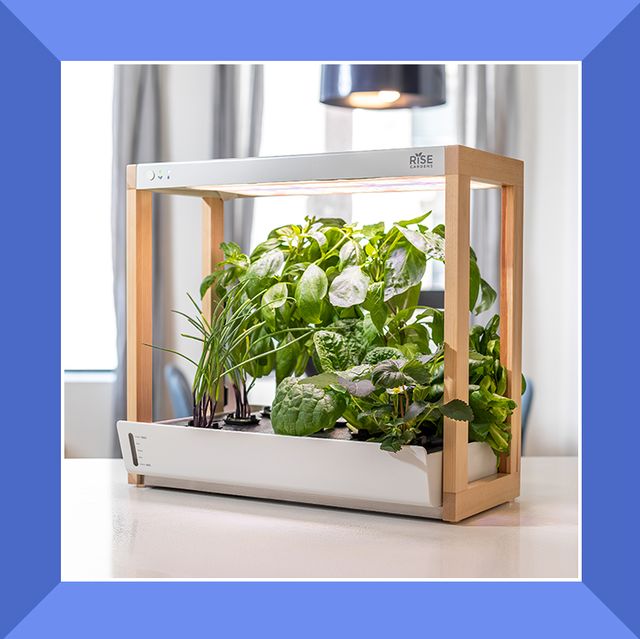
Best hydroponic boxes for beginners


I. Introduction
In the realm of gardening, hydroponics has emerged as a revolutionary technique, offering a soilless approach to cultivating plants that has captivated the hearts of both novice and experienced gardeners alike. Hydroponic systems eliminate the need for traditional soil, instead suspending plant roots in nutrient-rich solutions, allowing for optimal growth and enhanced yields. For beginners venturing into the world of hydroponics, hydroponic boxes serve as an ideal gateway, providing a convenient and user-friendly platform to embark on this exciting indoor gardening journey.
II. Choosing the Right Hydroponic Box
As you embark on your hydroponic adventure, selecting the right hydroponic box is crucial for a successful and enjoyable experience. Several factors merit consideration to ensure you choose a box that aligns with your needs and preferences.
1. Size: The size of your hydroponic box should be carefully chosen based on the available space in your home and the number of plants you intend to grow. Compact systems are ideal for limited spaces, while larger boxes can accommodate a wider variety of plants.
2. System Type: Hydroponic systems come in various configurations, each with its unique advantages and considerations. Deep Water Culture (DWC) systems immerse plant roots directly in nutrient solution, offering simplicity and effectiveness. Nutrient Film Technique (NFT) systems continuously flow a thin film of nutrient solution over plant roots, promoting rapid growth. Aeroponic systems suspend plant roots in air and mist them with nutrient solution, providing excellent aeration and preventing root rot.
3. Features: Essential features to look for in a hydroponic box include:
-
Lighting Systems: Adequate lighting is crucial for photosynthesis and plant growth. Choose a box with integrated grow lights or the ability to connect external lighting systems.
-
Water Pumps: Water pumps circulate nutrient solution throughout the system, ensuring proper nutrient delivery to plant roots. Select a pump with sufficient capacity for the size of your hydroponic box.
-
Nutrient Dosing Systems: Automated nutrient dosing systems simplify the process of maintaining the optimal nutrient concentration in the solution, reducing the risk of over- or under-fertilization.
4. Price: Hydroponic boxes range in price depending on their size, features, and brand. Set a realistic budget and consider the value proposition of different options, ensuring you get the most out of your investment.

III. Top Picks for Beginner Hydroponic Kits
To help you navigate the diverse array of hydroponic boxes available, here’s a selection of top picks for beginner hydroponic enthusiasts:
1. AeroGarden Harvest 6-Pod Indoor Hydroponic Garden: This user-friendly kit provides everything you need to get started, including a self-watering system, integrated grow lights, and pre-seeded pods with herbs and vegetables.
2. Click and Grow Garden 3.0 Hydroponic Growing System: This sleek and compact system features a modular design, allowing you to expand your garden as your needs grow. It also offers smart features like automated nutrient dosing and a control panel for monitoring plant progress.
3. LettuceGrow The Complete Hydroponic Garden Kit: This all-inclusive kit takes the guesswork out of hydroponic gardening, providing pre-seeded pods, a self-regulating water system, and LED grow lights for optimal plant growth.
4. iDOO Hydroponics Growing System 9 Pods Indoor Herb Garden Kit: This space-saving system is perfect for small kitchens or apartments. It features a self-watering system, adjustable LED grow lights, and a touchscreen control panel for easy operation.
5. HerbLife Hydroponics Growing System 12 Plant Sites Indoor Herb Garden Kit: This versatile system accommodates a variety of herbs and vegetables, making it ideal for those who want to grow a larger selection of plants. It features a self-watering system, adjustable LED grow lights, and a large water reservoir for extended nutrient supply.

IV. Setting Up Your Hydroponic Box
Once you’ve chosen your ideal hydroponic box, it’s time to embark on the exciting journey of setting it up and preparing it for your plants.
1. Unpacking and Assembly: Carefully unpack your hydroponic box and follow the assembly instructions provided by the manufacturer. Ensure all components are securely fastened and properly connected.
2. Planting Seeds or Seedlings: Choose seeds or seedlings suitable for hydroponic cultivation. If using seeds, follow the germination instructions provided by the seed packet. If using seedlings, gently place them in the designated planting holes or net pots.
3. Adding Nutrients: Prepare the nutrient solution according to the instructions provided by the manufacturer. Fill the system’s reservoir with the prepared nutrient solution, ensuring the level is sufficient to reach the plant roots.
4. Lighting Adjustments: Adjust the lighting system to provide the appropriate light intensity and duration for your chosen plants. Most hydroponic boxes offer adjustable lighting settings to cater to different plant needs. Refer to the plant-specific growing guide or consult the hydroponic box’s manual for recommended lighting schedules.
5. Monitoring and Maintenance: Regularly monitor your plants for signs of growth and adjust the nutrient solution level or lighting settings as needed. Top up the reservoir with water or fresh nutrient solution to maintain proper levels. Observe for any signs of pests or diseases and take appropriate action to address them promptly.

V. Growing and Harvesting Your Hydroponic Crops
With proper care and maintenance, your hydroponic box will soon be teeming with flourishing plants. Here’s how to nurture them to harvest and enjoy the fruits (or vegetables!) of your labor.
1. Plant Care: Provide ongoing care for your hydroponic plants. Regularly monitor water levels and nutrient solution concentration. Adjust the nutrient solution as needed to ensure your plants receive the optimal balance of essential elements. Prune any diseased or overgrown foliage to maintain healthy plant growth.
2. Harvesting Techniques: Once your plants reach maturity, it’s time to harvest! The harvesting techniques will vary depending on the type of plant you’re growing. For leafy greens, carefully harvest individual leaves as needed. For herbs, harvest stems just above a node to encourage further growth.
3. Tips for Success: Here are some additional tips to maximize your success with hydroponic gardening:
- Start with easy-to-grow plants: Herbs like basil, mint, and parsley are excellent choices for beginners due to their relatively simple requirements.
- Maintain consistent water temperature: Cooler water temperatures can slow down plant growth. Aim for a water temperature range between 68°F and 78°F (20°C and 26°C).
- Provide good air circulation: Proper air circulation helps prevent fungal diseases and promotes healthy root development. Some hydroponic boxes feature built-in fans, while others may require additional circulation methods like oscillating fans.
VI. Troubleshooting Common Hydroponic Issues
Even with careful planning, occasional challenges can arise in hydroponic gardening. Here’s how to address some common hydroponic issues:
1. Nutrient Deficiencies: Signs of nutrient deficiencies can include stunted growth, yellowing leaves, or discoloration. Identify the specific nutrient deficiency by researching the symptoms and adjust your nutrient solution accordingly.
2. pH Imbalances: The pH level of your nutrient solution plays a crucial role in nutrient availability. Regularly monitor the pH using a pH meter and adjust it with pH up or down solutions to maintain an optimal range between 5.5 and 6.5.
3. Pest and Disease Control: While hydroponic systems minimize the risk of pests and diseases compared to traditional soil gardening, they can still occur. Regularly inspect your plants for signs of infestation or disease. Use organic or biological pest control methods whenever possible to maintain a healthy growing environment.
4. Root Rot: Root rot is a fungal disease that can devastate hydroponic plants. Ensure proper aeration around the roots and avoid overwatering to prevent root rot. Regularly clean and sterilize your hydroponic system to minimize the risk of fungal growth.
5. Lighting Problems: Ensure your grow lights are positioned correctly and provide the appropriate light intensity and duration for your plants. Monitor the light spectrum and adjust if necessary to cater to the specific needs of your chosen crops.
VII. Advanced Hydroponic Techniques
As you gain experience and confidence with hydroponic gardening, you can explore more advanced techniques to further optimize your plant growth and yields.
1. Cloning and Propagation: Hydroponic systems provide an ideal environment for cloning and propagating plants. Research techniques for taking cuttings and propagating new plants from your existing stock.
2. Reservoir Management: Advanced reservoir management techniques involve monitoring and adjusting various parameters like dissolved oxygen levels and electrical conductivity (EC) to optimize nutrient uptake by plants.
3. Automated Systems: Consider incorporating automated systems into your hydroponic setup. These systems can automate nutrient dosing, lighting control, and even environmental monitoring, simplifying maintenance and ensuring optimal growing conditions.
4. Aeroponics and Aquaponics: Once you’ve mastered the basics of hydroponics, you can delve into more advanced techniques like aeroponics and aquaponics. Aeroponics suspends plant roots in a mist environment, providing excellent oxygenation and rapid growth. Aquaponics combines hydroponics with aquaculture, utilizing fish waste as a natural nutrient source for plants.